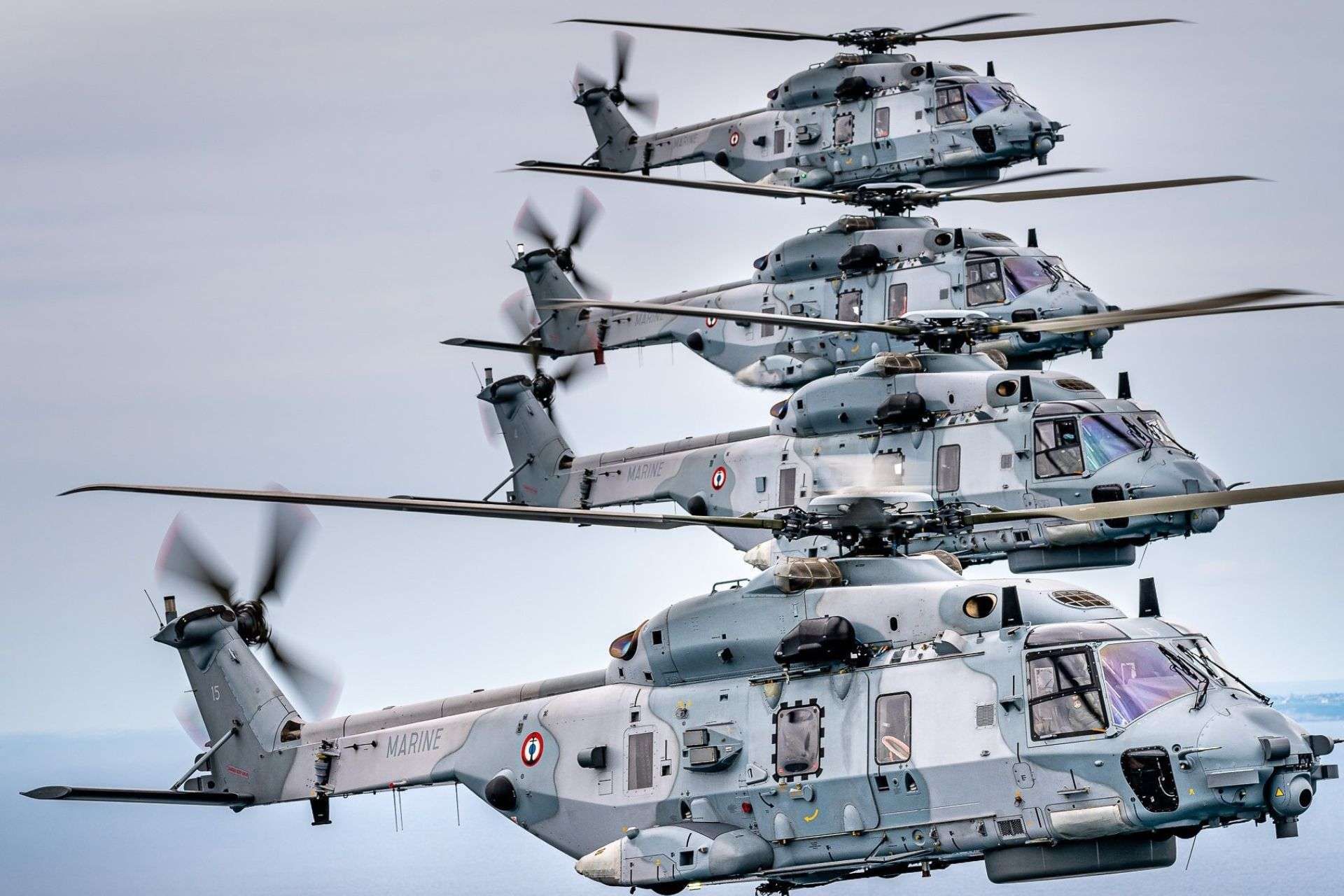Breaking news
French Navy NH-90 Helicopters Get Major Submarine Detection Upgrade.
The NH-90 Caïman helicopters of the French Navy are set to receive a significant upgrade in their submarine detection capabilities, aligning with ongoing efforts to innovate and adapt to modern maritime threats, as reported by the French Navy on April 29, 2024. Although the Ministry of the Armed Forces no longer publishes availability rates, it is clear that the technological enhancements to the NH-90 fleet represent a strategic improvement in their operational functions.

NH-90 Caïman helicopters on14 July 2021 (Picture source: French MoD)
The NHIndustries NH90, a medium-sized, multi-role military helicopter, was developed in response to NATO's requirement for a versatile battlefield helicopter that could also perform in naval environments. Manufactured by NHIndustries, a consortium including Airbus Helicopters, Leonardo (formerly AgustaWestland), and Fokker Aerostructures, the NH90 first took to the skies in December 1995 and entered operational service in 2007. Designed to meet the rigorous standards of multiple countries, including military airworthiness from Germany, France, Italy, and the Netherlands, the NH90 incorporates advanced technology and materials to enhance performance and durability. It comes in two main variants: the Tactical Transport Helicopter (TTH) for army operations and the navalised NATO Frigate Helicopter (NFH), each customizable with various weapons, sensors, and cabin configurations to meet specific operational requirements.
The NH90 stands out for its innovative four-channel fly-by-wire control system, the first in helicopter design, improving handling and safety. Its advanced composite airframe enhances ballistic tolerance and crashworthiness while reducing weight and increasing endurance by 30% compared to metallic counterparts. The cabin, accessible through large sliding doors or a rear ramp, is modular, allowing for rapid reconfiguration for troop transport, medical evacuation, or cargo missions. For maritime operations, the NH90 NFH features adaptations like the Harpoon deck-locking system and automatic rotor blade folding for shipborne activities. The helicopter is equipped with state-of-the-art avionics, including Thales' glass cockpit and multi-function displays, contributing to its capabilities in all-weather, day-and-night operations across a wide temperature and altitude range. As of early 2017, the NH90 had logged over 127,000 flight hours with thirteen nations, underscoring its role as a critical asset in modern military fleets.
Currently equipped with panoramic radar, thermal cameras, optronic balls, and Electronic Support Measures (ESM) for electromagnetic detection, the NH-90 Caïman helicopters are already a vital component of the French Navy's arsenal. These helicopters are capable of deploying acoustic buoys and operating sonar in both active and passive modes. However, a new addition to their detection suite is set to further enhance their utility. The integration of the Magnetic Anomaly Detection Extended Role (MAD-XR) system, developed by the Canadian company CAE in 2019, marks a significant upgrade. The MAD-XR is an extremely sensitive magnetometer designed to detect variations in the Earth's magnetic field. Traditionally, due to the size and weight of older MAD systems used for over 40 years, this technology was limited to maritime patrol aircraft. The newer, lighter, and more compact MAD-XR can now be installed not only on larger aircraft but also on helicopters, drones, and smaller fixed-wing aircraft, thereby enhancing versatility across various platforms.
Historically, only the Atlantique 2 maritime patrol aircraft were equipped with a magnetic anomaly detection system capable of confirming submerged submarines by measuring magnetic field disturbances. In July 2023, following a series of magnetic surveys on Panther and Caïman helicopters, the Naval Aeronautics Experimentation and Acceptance Center (CEPA/10S), with technical support from the Directorate General of Armament (DGA), successfully integrated the MAD-XR onto the NH-90 Caïman. The installation of this equipment was facilitated by the Caiman’s Parallel Data Acquisition System, specifically designed by CEPA/10S for onboard data collection.
A testing campaign conducted between April 15 and 19 assessed the performance of the MAD-XR in conjunction with the NH-90. The results of these tests were very promising, paving the way for broader deployment once the modification receives technical approval. This enhancement is expected to significantly strengthen the anti-submarine warfare capabilities of the French Navy's multi-mission frigates (FREMM), which currently rely on the CAPTAS 4 system and the USM 4110 hull-mounted sonar.


























